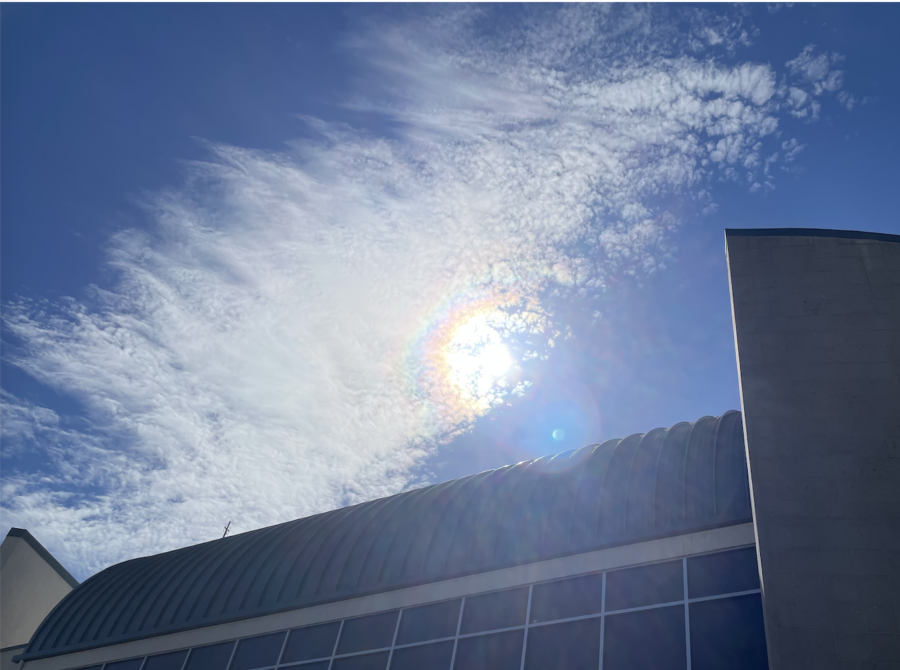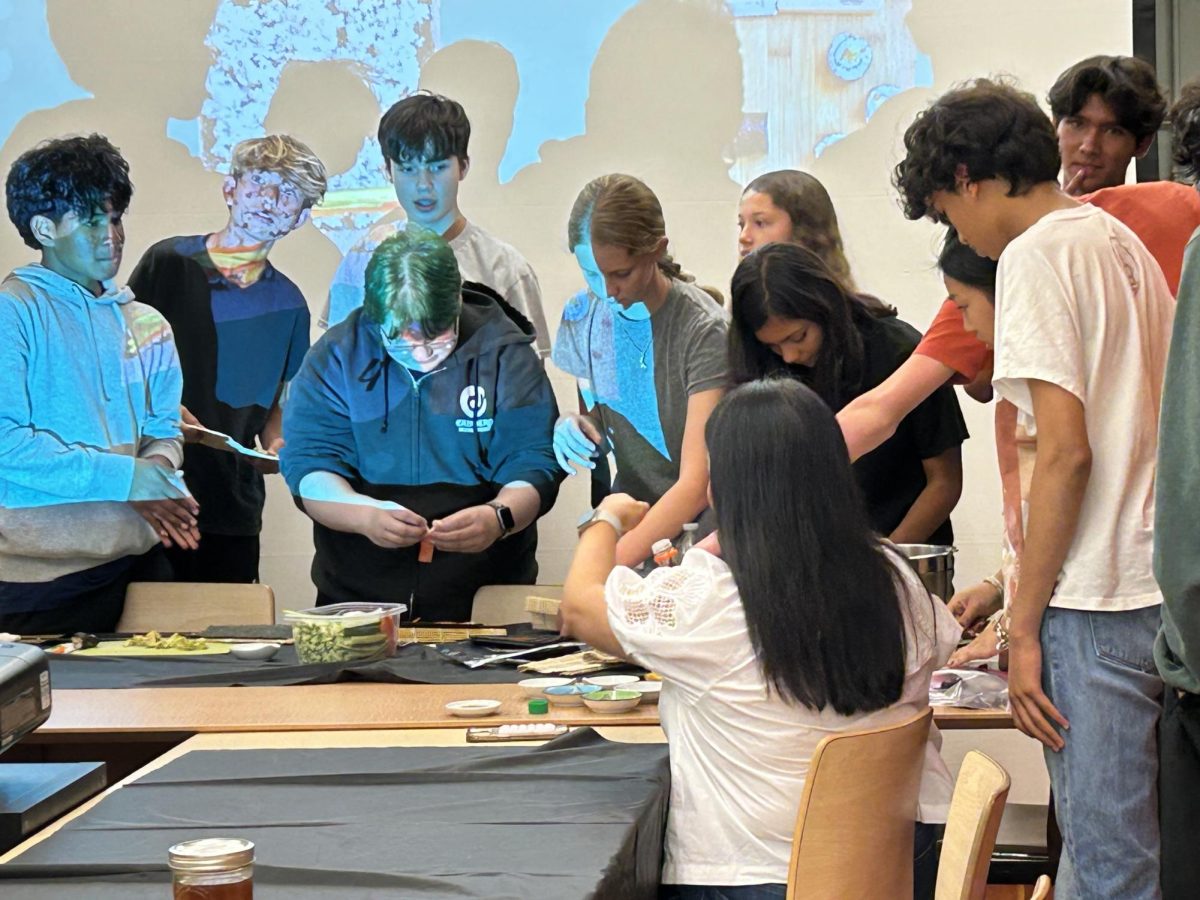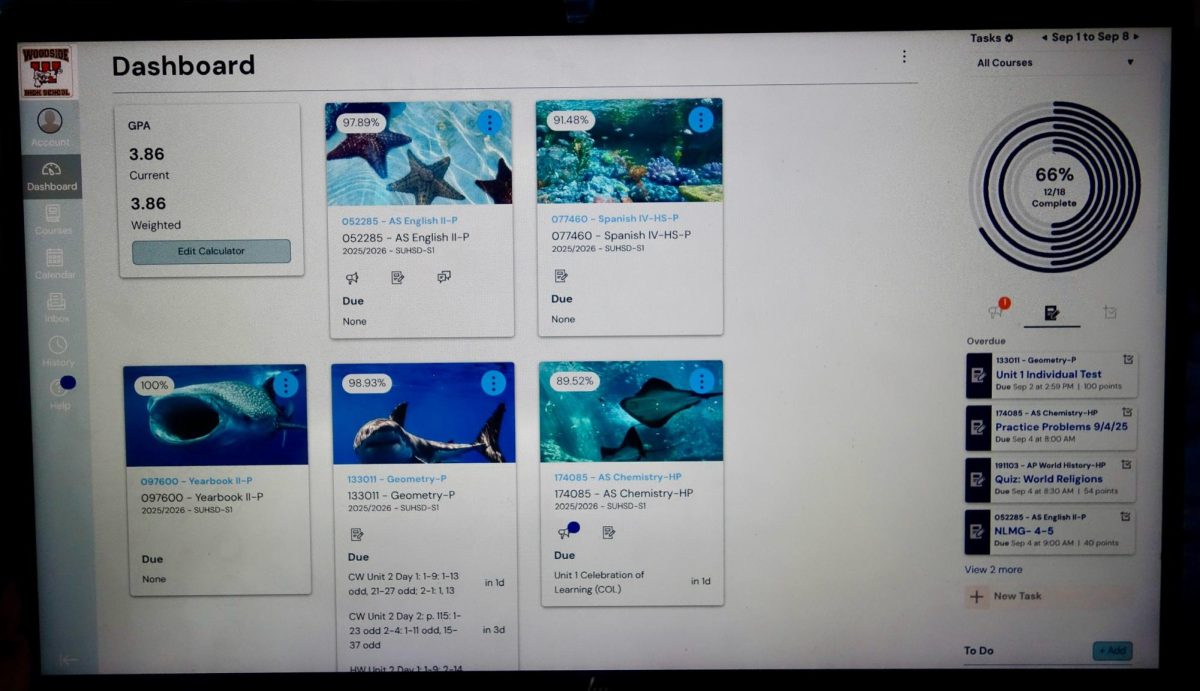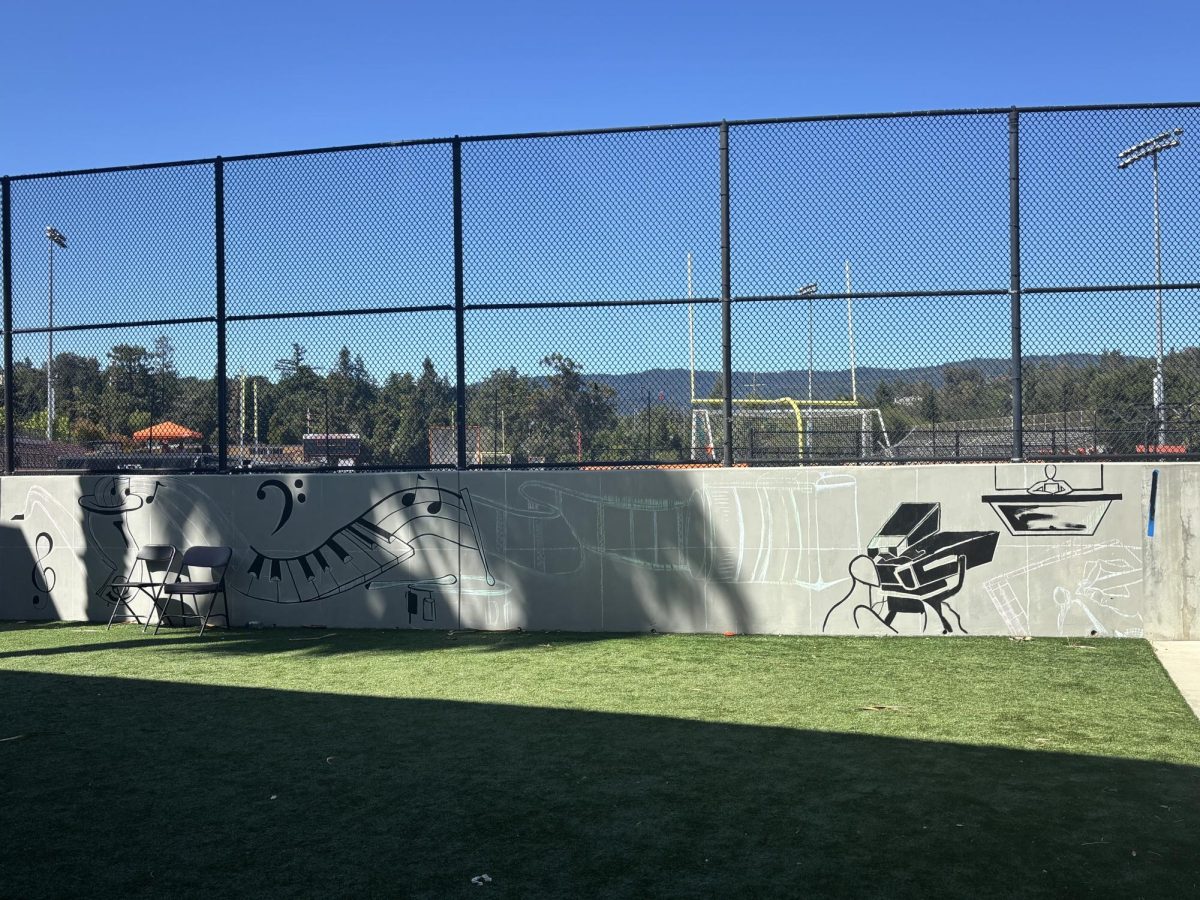Students and teachers fought through difficult classroom conditions as a powerful heatwave hung over campus throughout the week of September 5.
Temperatures reached a sweltering 107° Fahrenheit as students faced extreme heat while learning in a dominantly outdoor campus. While taking lunch breaks under scarce shaded areas, working in overheated classrooms, and taking occasional trips to air-conditioned spaces, affected students and teachers have taken the past week’s extreme weather as a learning experience. While not all classrooms on campus were sufficiently equipped to accommodate severe temperatures, thankfully for all, administrators at Woodside came prepared to help.
“Luckily, our admin team created a spreadsheet,” Spanish 3 and AVID teacher Amy Hanson said. “If someone was teaching a class and an un-air-conditioned room, and they wanted to go to [a cooler] space, they could just sign up.”
Unused classrooms and spaces with functional air-conditioning became a valuable asset during the worst hours of the heatwave. As the value of these workspaces increased, their demand grew more urgent as well.
“It was kind of a first come, first serve,” Hanson said. “So if you were teaching when the spreadsheet went out… and people got to it [before you,] then you were kind of stuck without a space.”
Workspaces that were unaffected by the heat proved to be a great advantage in maintaining a productive school day. While teachers and administrators worked hard to provide the best possible environment for their students, a lull in productivity was not always avoidable.
“When it’s really hot out, I usually just have trouble focusing,” Cross Country Co-Captain Dana Reed said. “I just zone out.”
Just as students were affected within the classroom, student-athletes faced their own set of challenges. Especially for those practicing outdoor sports, the heat demanded substantial sacrifices.
“One of our days was canceled,” Reed said. “And the other days, we cut down the workouts, [so] we didn’t run as much.”
When athletes chose to work out through the heat, the difficult conditions required extra precautions. Students were encouraged to focus on their physical health during hot practices.
“If you aren’t eating enough, you aren’t drinking enough water, or if you aren’t taking care of yourself, that’s [going to] show in your performance,” Reed said. “You’re [going to] hurt yourself, and you’re [going to] get sick.”
Triple-digit heat created a significant obstacle for athletes, but the effects of the heat were not limited to those running on the track. Students learning in overheated classrooms faced challenging conditions throughout the day.
“To be in an environment where it’s super hot like that, [with] no breeze, and no AC, it’s very uncomfortable,” Health Aide Nanette Pasion said. “[That] can affect people’s ability to concentrate… It can [also] dehydrate you quicker, especially if you’re not a great water drinker in general… So not only is it dehydration, but you’re losing electrolytes too, so people can end up feeling very lightheaded.”
Affected groups have come away with a few tips to stay cool and healthy, should campus temperatures spike again.
“I just suggest that you drink a lot of water,” Reed said. “But just take care of yourself. Don’t push yourself too hard, [because] missing one day isn’t [going to] be that bad.”
After observing students’ questionable choices throughout the week, teachers gathered a few words of wisdom as well.
“I would say, dress for the weather,” Hanson suggested. “I was really surprised to see that some students are still wearing hoodies at 2 pm.”
The sweltering weather that swept the campus affected all parts of the community, prompting Woodside to take action and offer support. Though the week of extreme temperatures brought many struggles, the school’s proactive approach has likely saved us from many more.
“I know that the staff that [had] AC offered their classrooms to the [teachers who] didn’t have AC,” Pasion said. “So we tried to accommodate people that way. [And] my office is always open. Students knew that they could come to the health office if they had any kind of difficulty breathing, or couldn’t get comfortable. So my support was there.”











